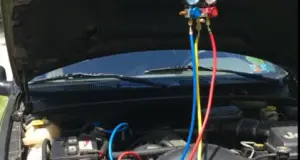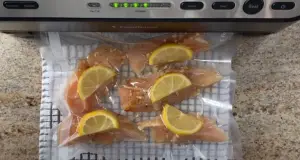A vacuum breaker delivers a simple, reliable way to release unwanted vacuum which may develop in a closed vessel or pipeline. It is designed to preclude vacuum conditions from happening in pipes or tanks and allows for rapid inflow of atmospheric air to reduce vacuum conditions in piping systems. But how do vacuum breakers work?
Vacuum breakers are effective in terms of freshwater supply. Moreover, the maximum use of a vacuum breaker is an irrigation system. Because it ensures the supply of fresh water from the irrigation system. In today’s article, we will tell you about the working process of vacuum breakers including different types of breakers. Keep reading the below part of the article to know about them appropriately.
How Vacuum Breakers Work
Below, we will discuss how vacuum breakers work.
Water pollution is now a common occurrence and this issue is increasing day by day. One possible cause is backflow. This vacuum is a dramatic drop of dirt that brings water back into the system. So there is no substitute for freshwater to protect huge amounts of public health. And a vacuum breaker is essential to solve this problem. Because this device will help to control the backflow and keep the running water free from pollution. Let’s see how it works.
A vacuum breaker has a check valve for water travel which causes an air inlet to be raised at the poppet. A closed valve is present in this air inlet. Both the air inlet and the check valve are in spring load condition especially when water is flowing. This causes the check valve to shrink. However, despite the spring pressure, the water pressure helps to keep the check valve open.
Occasionally there are accidents like water pipes bursting. Due to this, the water pressure suddenly goes down a bit. One of the things you can do if you are in that situation. Simply pull the water through the line which can make a hose and bring the contaminated water back to the bottom somewhere.
However, the vacuum breaker which creates pressure in the water. And a drop in the pressure of the water enables the spring so that the check valve can close it. The quick check valve also shuts off when the water pressure shuts off. So there is no chance of any backflow.
In the meantime, as the pressure decreases, the air inlet valve opens and allows air to enter the system. This prevents air backflow and restores normal water pressure.
Different Types of Vacuum Breakers
There are different types of vacuum breakers. We are highlighting them in short in the following paragraph.
The Atmospheric Vacuum Breaker
It consists of a member of the check valve and an air vent. Normally, this device is off when pressed. The main purpose of atmospheric vacuum breakers is to stop back siphon age. This also allows air to enter the air vent piping system to stop back siphon-age. A common component of designing check valves and air vents is the same type of mechanical.
The Pressure Vacuum Breaker
The evolutionary form of an atmospheric vacuum breaker is the pressure vacuum breaker. Endless water pressure is a limitation of AVB’s design. That is why PVB has emerged which is being used extensively. A pressure vacuum breaker is designed due to a serious concern such as an inlet valve stuck in AVB.
The AVB has a moving part that acts as an air inlet. It is not able to create water pressure so it acts as a check valve in the supply piping. PVB check valves on the other hand can create endless pressure of water. When the pressure in the popping system decreases, the spring check valve opens into the atmosphere so that air can enter inside the system. As a result the downstream siphon breaks.
Thus, PVB is made keeping in mind that it will work well under pressure for a long time and will not become inactive. This breaker spring loads the internal check valves so that they can serve for a long time and ensure water backflow resistance. Install the pressure vacuum breaker at least 12 inches above the downstream.
A Hose connection Vacuum Breaker
A hose connection vacuum breaker is one of the ways to properly set the water supply. Install it at least 6 inches above the surface. The installation process of HVB, however, follows the installation parameters of AVB. However, most HVBs have a set of screws that are used to set it.
A hose-connected vacuum breaker helps to control the backflow of water flow. Here a spring load check valve is opened to ensure water supply through pressure especially when outflow occurs in the valve. HVB is indicated if there is sufficient pressure when opening the check valve. In this way, any water flowing backward can enter the surface.
The Spill-resistant Vacuum Breaker
The spill-resistant type vacuum breaker is a next-generation breaker. Because it contains highly advanced technology that eliminates water splashing. This vacuum breaker performs its activity independently. It is thought of as the advice version of PVB. This is because SVB requires a check valve and an air inlet that keeps the water flowing.
A spill-resistant vacuum breaker allows the diaphragm poppet below the valve chamber to close the internal check valve during the setting process. But this only applies to PVB. This prevents air from entering the valve and eliminates water splashing. You can use SVB as an alternative to PVB if you wish as both of them have almost the same procedure.
Where to Install Atmospheric Vacuum Breaker?
There is another device like vacuum breakers that works similarly. That is the atmospheric vacuum breaker.
- AVB is known for its isolation protection. So these devices are located in the river depth determination fixture and its equipment.
- It plays a very effective role where it will be possible to control the device under backpressure. In this case, refrain from installing on the service bidding line.
- Be sure to install the AVB on a steep spot. Installing this device outside the plumb may not work perfectly as the valve is less likely to be fully open.
Conclusion
Vacuum breakers are ideal for avoiding risks with your drinking water. These devices will protect your drinking system from toxins. Keep in mind that backflow is extremely dangerous for water. And there is a rare substitute for a good quality vacuum breaker to get rid of it. We hope this article will help you to understand how do vacuum breakers work.





